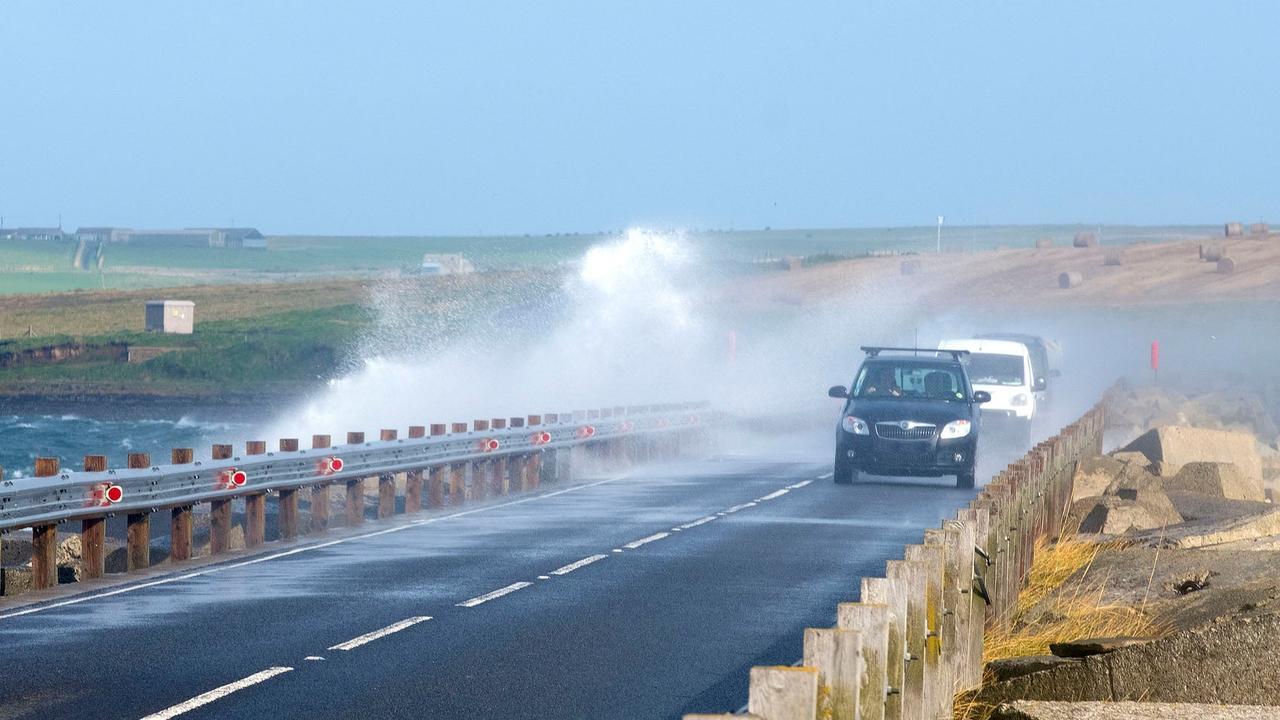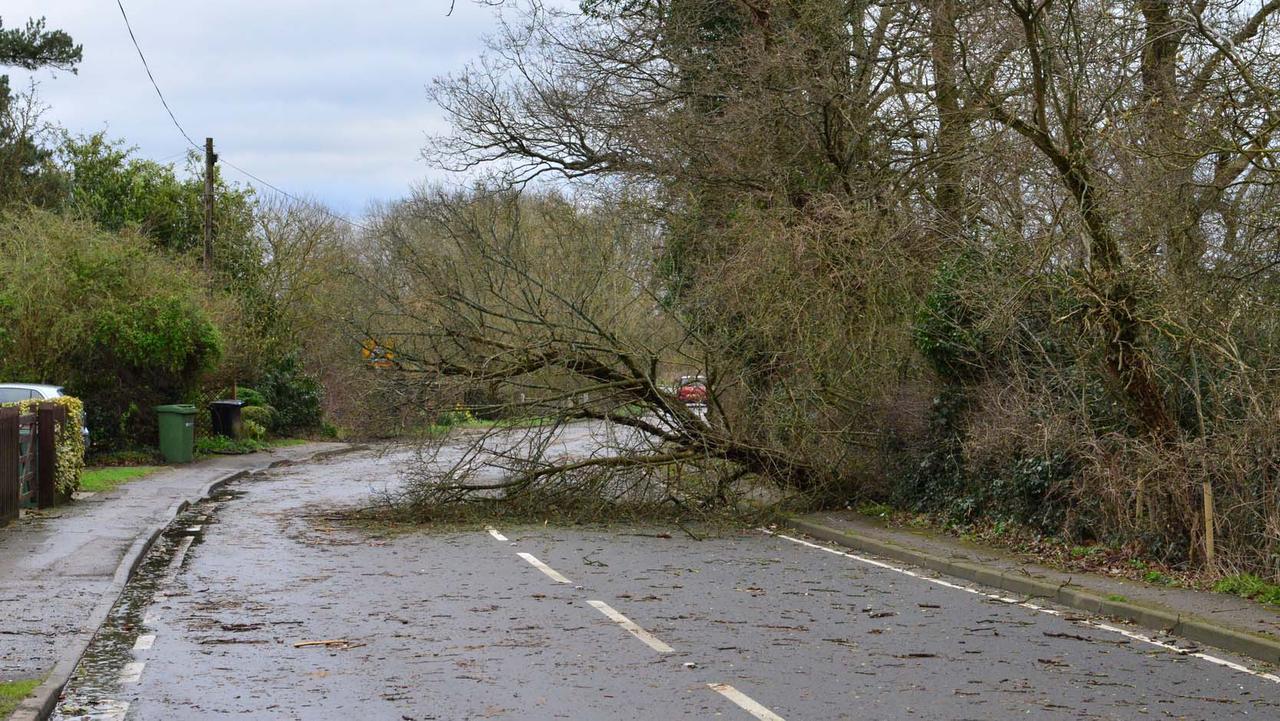Feel like you’re being blown about all over the place? Here’s how to drive safely in high winds.
Driving in strong wind can be just as tricky as driving in heavy rain or when the sun is low. It can be unpredictable, concerning and can introduce hazards that you wouldn't normally consider. So it's well worth being prepared for when a stiff breeze turns into yet another named storm.
While strong winds don’t usually bring the risk of flooding or poor visibility, they can cause damage to buildings, roads, infrastructure and trees. When driving in high winds, you might come across debris, closed roads and swerving vehicles. Our guide will show you how to be as prepared as possible.
Before you set off
- Consider whether your journey is necessary, or if you can stay where you are until the wind dies down
- Keep up to date with local weather forecasts and adverse weather alerts
- If applicable, try to plan your route to avoid exposed areas or lots of trees
- If you are driving to meet someone, consider sharing your route and estimated time of arrival with them
- Keep your phone charged up in case of an emergency
- Make sure to put warm clothes, plus drinks and snacks in the car
Driving in wind
We've all seen videos of trampolines flying into another dimension in strong winds, but storm-force winds are also capable of drastically affecting cars and lorries. The direction that the wind is blowing will make a huge difference on your car.
In a headwind, where you’re driving directly into the wind, you may find it harder to accelerate or you might have to press the accelerator more than you’re used to.
Conversely, in a tailwind, the wind can carry you along so you’ll need to watch your speed – you might be travelling much faster than you realise, and you may need to brake stronger than you would otherwise.

Crosswinds – where the wind is hitting the side of the car – can affect any vehicle, especially in very gusty conditions. You may feel your car being pushed towards the verge or towards the next lane on the motorway. Be prepared for this by firmly (but not over-tightly) holding the steering wheel – with both hands whenever possible – and being aware of when gusts might hit you.
In strong winds, you’re most likely to be affected on exposed stretches like bridges or roads without trees lining them. You need to take care when overtaking large vehicles, as they might be blocking wind gusts that’ll hit you once you’ve passed.
When driving in tree-lined areas, keep an eye on the trees and branches above you, just in case any look like they're about to fall in your path.
You should keep up to date with local weather forecasts and any weather alerts, and plan your journey accordingly.
What vehicles are most likely to be affected by high winds?
Some vehicles and road users are more susceptible to heavy winds than others. These include:
- Lorries
- Buses
- Cyclists and motorbike riders
- Horse riders
- Vehicles with caravans or trailers
- Vehicles that are relatively tall compared to their footprint (such as small hatchbacks or SUVs, campervans or cars with roof boxes)
Even if you’re not driving one of these vehicle types yourself, be alert when driving close to them in case of sudden swerving, and give bike riders more space.
When is it too windy to drive a car?

If you can see that trees are being blown sideways or if you feel that you could potentially be pushed over by the wind, you might want to think twice about getting in the car unless it’s absolutely necessary. The higher the wind speed, the more likely you are to come across fallen trees, debris and lorries swerving to fight the wind. In really high winds, you might see empty lorries with their curtains open so that they’re less susceptible to crosswinds.
If your region is covered by a severe weather alert, where there's a risk to life or property, it's always worth staying at home and not driving if you can help it.
Is it better to drive fast or slow in high winds?
As with any adverse weather, it’s better to slow down when driving in strong winds. Really high winds can affect how your car brakes and drives, so it’s better to drive slower in these conditions so you have more control and more time to react. Increase the distance between you and the vehicle in front, so you can look further up the road and anticipate things changing.
Is it safe to drive in strong winds?
We’ll leave that to your judgement, if that’s okay. If you don’t feel comfortable heading out when the wind is strong enough to push things over, it’s best to stay out of the car. However, if you do head out, and follow our advice – take it steady, keep your hands on the steering wheel and be aware of vehicles that are susceptible to wind – it should be safe to drive in strong winds.
Of course, if a severe weather warning is issued for your area, we’d recommend not getting in the car.
How can I protect my car from wind storms?
The main thing you can do to protect your car from wind storms is to be careful where you park. In high winds, try not to park under trees or near anything that could damage your car – like errant supermarket trolleys.
If you have a roofbox on the car but you don't need to use it during a period of heavy wind, consider taking it off to reduce your car's susceptibility to crosswinds.
Finally, just be aware of your surroundings and of other road users.



































